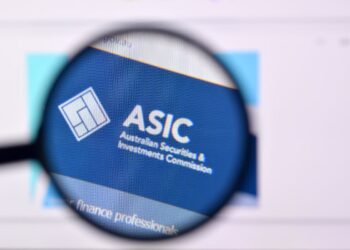Advisers are drowning in choice — that is, a growing choice of information and new research available to help them get the requisite levels of documentation they now require for super fund switching.
And that’s where the super fund comparators come in. While new players, such as Heron Partnership, hop into the comparator space created by the plethora of smaller funds, there’s new extension services flowing from the established online research providers for adviser and professional groups.
And like most other online financial services, it’s all about scale, volume and efficiencies for lower costs.
“This is a new market for the information that we’ve been collecting for years,” says Chris Page, managing director at Rainmaker. “We certainly hope that it would be profitable. The data still has to be modified, so there’s lots of resources that have to go into it.”
Page adds: “Given our 14 year history, we have a rich database which can be adapted to the planning community as they evolve.”
Forecasted super switching
While it’s early days on the switching story, there’s still movement around employer funds, partly through job changes but also through a willingness to give choice a chance. The recent Mercer survey found that while its sample members were willing to wait for two years in their current fund, any slip in equity market returns could swiftly impact upon their loyalty.
According to Chris Butler, managing director of Heron Partnership, corporate clients are reporting that 25 per cent of members who would have joined the company fund have not joined.
“Most of these people may be possibly making a mistake by not joining,” he says.
“Clearly, there’s a process they should go through…the industry expectation is that less than 10 per cent of members will change but that’s for people of higher average assets, so it could be more.”
And that’s why researchers are beefing up their offers with announcements about research alliances (Chant West and van Eyk), new customers (AMP and Mercer), and extension services and sign-ups of new subscribers all round.
Rating the raters
But as the deckchairs shuffle, the Association of Superannuation Funds of Australia’s (ASFA) Dr Michaela Anderson points out that financial planners need to know about the ‘from’ funds and explain to their customers the implications of moving from the fund they are currently a member of.
“Established and emerging providers of information are helping planners satisfy their duties to customers. If planners do not make use of appropriate information about the ‘from’ and ‘to’ funds, then they will leave themselves open to enforcement action by ASIC [Australian Securities and Investments Commission] if they are audited or shadow shopped,” she says.
As, indeed, Bridges Financial Services discovered when it provided verbal advice on charges and the loss of benefits in super fund switching to clients, but not in a written Statement of Advice (SOA).
ASIC rapped Bridges for this and, since then, has lifted the bar on the required due diligence by planners. “While there are currently over 1,000 super funds in operation, it’s more likely that the vast bulk of members are in no more than 80 to 100 funds,” Dr Anderson adds.
“The information agencies also play a role in dealers putting together approved lists, and in planners choosing a fund or investment option from such lists. The various rating agencies do use different methodologies, and there are also differences in the way they are remunerated.”
According to Anderson: “Some rating agencies charge managers of investments to be rated or listed. Greater transparency in the methodologies used to rate managed investments and in how rating agencies are remunerated is desirable, if planners and consumers are to be confident about using them.”
In-house research
Ipac’s manager of planning strategy John Dani is responsible for training and technical support for the group’s stable of 40 advisers and has been assessing research subscriber services for Ipac at the time of writing.
“We’re in the process of assessing Select Super, Chant, Heron and a whole bunch of services…they all do slightly different jobs, and have strengths and weaknesses. It’s a hugely competitive place in the market.”
Regardless of what software they bring in for improved efficiencies, Ipac financial planning intends to centralise its advisers’ desktop research in-house.
“We’ve held the view that a competent adviser has the ability to research super funds regardless of whether they’re on the approved product list,” adds Dani.
“Generally, switching is often in the context of broader advice assignment. What do we need to research? Some things relate to insurance coverage differences on the ‘from’ and ‘to’ fund; exit fees; will they be losing or gaining access to binding nominations; changes in asset allocation and fees relating to the funds and the cost of insurance coverage between the funds. So the list is quite extensive to ensure that the client is fully informed.”
Comparison difficulties
According to Dani: “One of the hardest things that is more difficult to compare is the quality and nature of investment management taking place. One fund may be more expensive than the other but is it because they’re superior in investment management or have more investing options or have more coverage?”
He also believes that “fees are a key driver but in relation to what’s being delivered it’s an important characteristic. So it needs to be evaluated by what’s been done for the fee”.
Dani says super fund members may weight up certain characteristics over others so the comparator may institute a rating system, which acknowledges that emphasis, such as fees over quality of investment management.
“The biggest challenge relates to corporate funds and their details, which aren’t readily available. We rely on the member to provide us with the information because even if we ring up direct, it’s hard to find someone knowledgeable. Member booklets, statements and annual reports are all sources we draw upon.”
Dani adds: “Bringing in software to allow quick comparisons is really important because of efficiencies. It has had an impact on our advisers already in ensuring that [the process] is conducted thoroughly. It’s fair to say that the industry has been put on notice by regulators and that it’s conducted in the best interests of the client, but the time and effort expended means that the client may have to incur a cost. So it will be interesting to see if this happens.”
Using a third-party service
AMP and AXA are clients of the Mercer <IS> service. “It’s a new market with new people…and it will probably look very different in three to four years from now,” says Mercer Investment Consulting’s David Carruthers.
“The number of super funds will be less and the number of research houses may change as well. There’s some new players; the key is getting clients on board and having access to them. For us, we have a good start,” adds Carruthers.
AMP Financial Planning chief operation officer Neil Macdonald says that while they haven’t run a specific audit on the time taken on the switching due diligence, it possibly takes between 12-14 hours for a planner to give advice to a client on a planning exercise, including a few meetings and researching products and follow-up documents.
Macdonald sees small super funds as a “two-edged sword but you have an obligation to make sure that the advice is reasonable”.
Rather than going to three sites, AMP hopes that the Mercer site available to the dealer group will do the job. AMP also has an extranet feed on its approved list to its planner group.
Like most other licensees, AMP has a professional standards manual showing requirements and obligations. When ASIC released its guidelines in June, Macdonald says AMP changed some of its SOA formats “to make it clearer to clients”.
“For instance, we tidied up the wording about replacement contracts, we made it clearer about different costs and consequences and in line with the formats of ASIC and we did some training for our 1,300 planners,” he says.
“Most [planners] are trying to do the right thing; the majority take efforts to find out the loss of benefits…yes, it can be difficult and we’ve had discussions with suppliers about the likely implications of better data.
“There’s a difference between researching and recommending approved products and researching products in place,” he adds.
Industry funds
HESTA chief executive Anne-Marie Corboy believes that industry funds are still pretty much out in the cold with planners, such as AMP, and while she welcomes the inclusion by the rating groups of industry funds, she says that it’s only a recent development that planners have to take a proper look.
In response, industry funds have recently brought in their own planners and outsourced services.
“I still think there’s an issue about appropriate advice and best advice and what does that mean? Does appropriate advice represent the best outcome for a member or a range of options appropriate for a client?” says Corboy.
She adds: “There will be some ongoing issues about that terminology. From our perspective, we have had many more transfers in than out…and we continue to have a larger inflow. It’s probably a bit early to say that there’s change from choice but we’ve had a huge sign up of employers — two and half times our normal sign up.”
Checklists for advisers
Over at MLC, there’s a checklist for switching and according to licensee general manager Greg Miller “it could take some time to do”.
“We ask them to look at fees and costs (seven to eight areas) and insurance (six options); investments and fund structure (defined benefit versus accumulation, does the award allow fund choice, flexibility on contributions); options on death, retirement, redundancy, resignation (anything on events); level of service, lost benefits and other significant consequences,” he says.
MLC utilises research from Chant West and van Eyk, as well as its own internal research, and then the adviser is expected to do the extra yards.
“We tell them to contact the trustee and collect documents. Client annual statements are another source, and a number of funds have a website and standard choice forms, as well as a warning about some of the things they need to keep in mind, like continuation options. We also have a book called Giving Fund Choice Advice.”
Miller adds: “We do an annual review on advisers and get their files and have a look through…this includes the switching process. The issue is if there’s small balances, then it’s quite onerous but we understand that there are some complications that need to be taken into consideration when moving around.
“At the end of the day, you still need to know the client and do the appropriate work to demonstrate that.”





